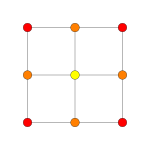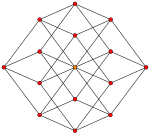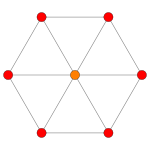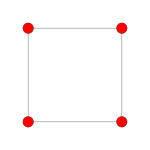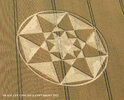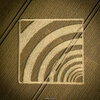I second your hope.
Maybe it is coincidental but I have recently been re-reading
Dr Joseph P Farrell's book
Thrice Great Hermetica and the Janus Age. I have been focusing on what he has to say about the involvement and influence of the Knights Templar in the finance, politics and culture of the Middle Ages. He believes that they played a large part behind the scenes in launching the Renaissance, which continued even after their suppression in 1307. This included the secret promotion of Jewish Kabballah teachings, particularly in their strongholds in southern France and Spain and the practice of alchemy (which makes me wonder whether they may have had any involvement with the secret enclave of alchemists based in the Pyrenees as mentioned by the C's).
However, it was eventually a mixture of the (Egyptian based) Hermetica, a Christianised Kabballah, and Neoplatonism that would inspire generations of medieval scholars and philosophers, including men like the English magus,
Dr John Dee and the later Rosicrucians, like
Robert Fludd and
Sir Francis Bacon, who followed him and helped to promote hermetic thinking and alchemical ideas throughout Europe, which would eventually lead to the Enlightenment. This period would see a major refocusing not only on the ideas of the great Greek philosophers like Pythagoras, Plato and Aristotle but also on people like the great Roman architect
Vitruvius. This focus would include embracing the concept of sacred geometry, which would not only find reflection in great church and state buildings erected in the Middle Ages but also in structures such as theatres, which thus became magical places where plays like those of William Shakespeare would become alchemical works in their own right, transforming public consciousness (the real purpose of alchemy). The very construction of the theatre on sacred geometrical lines would play a part in this process. Farrell, quotes
Dame Frances Yates' works at length on the Elizabethan age and theatre. This included her depiction of the ground layout of Shakespeare's Globe Theatre in London, which clearly reveals the influence of sacred geometry in its construction:
View attachment 82902
Curiously, this use of sacred geometry compares well with the complex geometry incorporated into the layout of Stonehenge by its Megalithic builders:
A sketch showing how Landscape Architect Sarah Ewbank, from Gloucestershire, imagines Stonehenge looked.
View attachment 82905
Sarah points out that Stonehenge has a total diameter — some 30 metres — which is almost exactly the same as Shakespeare’s Globe (pictured), a very similarly thatched building
Since those Megalithic builders were the descendants of Atlantean survivors and would still seem to have been aware of some of their Atlantean forebears' hyper dimensional knowledge, it says something that it took thousands of years before the British architects of the Middle Ages achieved catch-up in their designs.
However, this application of hyper dimensional knowledge to induce an alchemy or change of consciousness did not stop at architecture but carried over into music too, as Farrell goes to great lengths to explain in his book (especially using the music of J. S. Bach to illustrate his point). However, one of the people who Farrell mentions was a great influence on the metaphysical thinking of John Dee and others was the Franciscan Friar and Venetian philosopher and Kabbalist Francesco Zorzi who wrote Harmonia Mundi (Harmony of the World) in which he set out the 'world music' of the Macrocosm and its echoes or parallels in the harmonious composition of the Microcosm. This not only reflects the Hermetic maxim or principle of "as above, so below' but also presages modern day physics search for the unification of relativistic physics (which deals with the physics of the Macrocosm) and quantum physics (i.e., sub-atomic physics or the physics of the Microcosm), which will ultimately find fruition in the Unified Field Theory - which is where we came in.
Hence, I take your point where you quote the C's when they say:
A: Elaboration is not needed because the answers are there for you already in the texts, as with so much else. One needs only listen to the "music to your ears".
And that, of course, takes us back to Pythagoras and his 'Music of the Spheres' since he supposedly believed that the adept when fully tuned in could actually hear the Music of the Spheres.
And again the C's quote above may also link with what the C's said here about Stonehenge:
Q: Is it the case that some of them communicated with higher density beings via Stonehenge, and that these communications they received...
A: Stonehenge used to resonate with tonal rill, teaching the otherwise unteachable with wisdoms entered psychically through crown chakra transceiving system.
Perhaps the key word there is "
resonance", which takes us back to prime numbers and the C's statement:
Session 7 November 1998:
A) You mentioned the term ‘pyramidal’ and I thought about putting prime numbers along a pyramid, around, higher and higher, but then, today, we discovered that Ulam was putting prime numbers along a spiral and there were funny patterns arising. So, I thought that maybe we should do something similar, but three dimensional rather than two. Is this the right track?
A: In prime numbers, you will find resonance.
Q: Resonance in prime numbers? Can you please elaborate a little bit on that?
A: Elaboration is not needed because the answers are there for you already in the texts, as with so much else. One needs only listen to the “music to your ears.”
Q: Why didn’t you answer my question about putting prime numbers around a pyramid?
A: Mathematics converts to sound in geometric measurements. Why do you think the pyramid became a pyramid?
Come to think of it but Sarah Ewbank's reimagining of Stonehenge, as shown above, does look somewhat pyramidal. Where these musical clues by the C's therefore just coincidental or do they, as Pythagoras thought, lead us in some way to the theory of everything?



